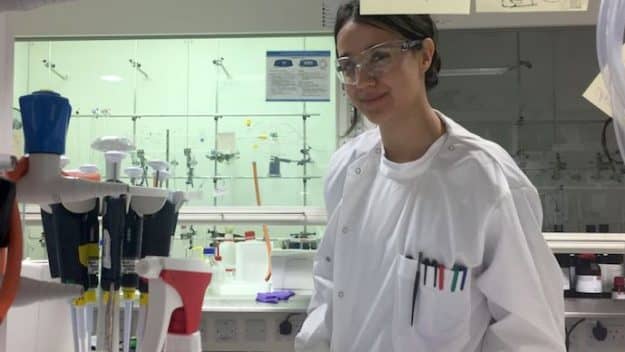Retinitis Pigmentosa (RP) is an inherited degenerative eye disease that causes a gradual loss of vision. The Argus II, Retinal Prothesis System, was approved by the US Food and Drug Administration in 2013, but the solution is both expensive and complicated.
A 24-year-old researcher and doctoral student at Oxford University, Vanessa Restrepo-Schild has developed a much better solution to the retinal degenerative disease. The researcher has become the first to develop biological, synthetic tissues in a lab which can potentially revolutionize the bionic implant industry. Typical artificial retinal solutions make use of rigid materials, but the technology developed by Restrepo-Schild can treat eye diseases like retinitis pigmentosa with minimally invasive methods.
The retina at the back of the eye converts light signals into electrical signals that travel via nerves and trigger a response in the brain. People suffering from diseases like RP have their vision impaired by retinal dystrophy. The aim of Vanessa’s research is to reverse the degenerative effects of the eye disease using a synthetic double-layered replica of the retina. The artificial retina made up of soft water droplets called hydrogels combined with biological cell membrane proteins, resembles more with human body tissues. The tissues are natural, biodegradable, call for less invasive procedures, and also reduce the chances of any adverse reactions on the body.
The researcher explains, “The human eye is incredibly sensitive, which is why foreign bodies like metal retinal implants can be so damaging, leading to inflammation and scarring.” The eye-friendly synthetic material is likely to “stimulate the neurons at the back of our eye just like the original retina.”
During the testing under laboratory conditions, the synthetic retina has proved successful, and Vanessa is working to explore more possibilities of using synthetic tissues to bring improvements to bionic implants. She has already filed for a patent for her technology that she intends to improve. She says:
“I have always been fascinated by the human body, and want to prove that current technology can be used to replicate the function of human tissues, without having to actually use living cells. I want to take the principles behind vital bodily functions, e.g. our sense of hearing, touch, and the ability to detect light and replicate them in a laboratory environment with natural, synthetic components. I hope my research is the first step in a journey towards building technology that is soft and biodegradable instead of hard and wasteful.”
The synthetic retina has limited functionality as of now, but the team is planning to expand the possibilities so the replica can recognize different colors, shapes, and symbols. It will be tested on animals, and then clinical trials on humans will be conducted.
Source: University of Oxford


